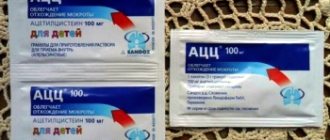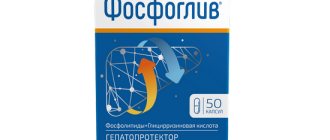Magnesium sulfate has many other names: magnesia, magnesium sulfate, Epsom salt or Epsom salt. All this is the same substance, which has long been used in medical practice as a sedative, antispasmodic and vasodilator. Injections have this effect. When taken orally, the drug works as a laxative. We tell you how to use magnesium sulfate to cleanse the intestines so as not to harm your health.
Pharmacodynamics and pharmacokinetics
Pharmacodynamics
What is magnesium sulfate? The State Pharmacopoeia defines magnesium sulfate (formula MgSOi) as a medicinal product and indicates the standards for its production and the highest doses of use. The product “magnesium sulfate” is assigned the code OKPD24.42.13.683.
With water, this substance forms hydrates, the most important of which is heptahydrate - bitter, or Epsom salt - this is magnesia , as it is more often called, which is used in medicine. Available in powder form, from which a solution or suspension is prepared for oral administration and in ampoules for intramuscular and intravenous administration.
Depending on the route of administration, it has different effects on the body. injections ) - sedative , diuretic , vasodilator , anticonvulsant hypotensive , antispasmodic , antiarrhythmic , tocolytic , hypnotic .
The mechanism of action as an anticonvulsant is due to the fact that magnesium reduces the release of the neurotransmitter acetylcholine from synapses, suppressing neuromuscular transmission, and has a depressant effect on the central nervous system.
The tocolytic effect (relaxation of the muscles of the uterus) is explained by the fact that magnesium reduces the contractility of the uterus and increases blood flow in it.
The antiarrhythmic effect is due to the stabilization of cell membranes and a decrease in the excitability of cardiomyocytes. Effects after intravenous administration develop immediately, after intramuscular administration - after 1 hour.
When taken orally, it has a choleretic effect and serves as a laxative , which is used for constipation or to cleanse the intestines, for blind probing, poisoning with salts of heavy metals (it is an antidote). The laxative effect is due to poor absorption in the intestine, in which osmotic pressure increases and water accumulates, which leads to dilution of the intestinal contents and increased peristalsis.
The injection solution can be used orally as a laxative. The onset of effect when taken orally after 1-3 hours, lasts 4-6 hours.
Magnesium sulfate has also found its use in cosmetology in the manufacture of emulsions, lotions and creams. It is used as a relaxing bath salt that relieves muscle tension.
Pharmacokinetics
When administered parenterally (injections), it penetrates the BBB. In breast milk it creates concentrations that are 2 times higher than the concentrations in the blood. Excreted by the kidneys, the rate of excretion is proportional to the level of glomerular filtration. diuresis increases .
When administered orally, it is poorly absorbed from the intestine. With malabsorption and consumption of fatty foods, magnesium absorption is reduced. Deposited in bones, muscles, kidneys, myocardium.
Compresses
If you apply magnesia locally in the form of compressors, you can improve blood flow in the tissues and obtain an analgesic effect.
There is such a term as sports magnesia. It is used to dry the palms. Thus, the slipping of the athletes’ hands while they take the apparatus or equipment in them is reduced.
A compress of magnesium for cones helps just as much. To work, just wet the bandage and apply it to the affected area.
Indications for use
- hypomagnesemia , tetany ;
- ventricular tachycardia;
- arterial hypertension , crisis state with cerebral edema ;
- urinary retention;
- brain concussion;
- encephalopathy , epileptic seizure ;
- poisoning with barium chloride , salts of heavy metals ;
- bronchial asthma (as part of complex therapy).
Magnesium Sulfate powder is used orally for:
- constipation;
- gallbladder dyskinesias , cholangitis and cholecystitis (for tubing);
- duodenal intubation;
- poisoning with salts of heavy metals;
- to cleanse the intestines.
How to make a compress correctly?
More often, compresses containing magnesium are used to get rid of seals that have appeared on the skin after injections. Since this minor bump can cause discomfort, for this reason it is recommended to get rid of it. Thanks to the compress, the hard surface will quickly dissolve, and the bruise will decrease in volume. However, if the area where the injection was given is very swollen, throbbing and aching, then medical attention is needed immediately.
To make a medicine, you must follow certain steps:
- Magnesia powder or tablet must be diluted in boiled water (5 mg of the drug - 50 mg of water). If an injection is taken, it can be used in its pure form.
- Then a cotton swab or hygroscopic cloth is soaked in the solution, wrung out, and then applied to the resulting lump.
- Cover the top of the cotton wool with polyethylene, and then secure it with a plaster or bandage.
Before applying the compress, you need to make sure that you are not allergic to magnesium. If the bump is insignificant, then secure the cotton wool soaked in the solution with an ordinary adhesive plaster. However, if the formation is large, the bandage should be bandaged. When applying a magnesium compress to newborns, it is necessary to use a soft and clean bandage.
Contraindications for Magnesium Sulfate
- arterial hypotension;
- severe chronic renal failure;
- severe bradycardia ;
- hypersensitivity;
- AV block;
- period before childbirth (2 hours);
- depression of the respiratory center.
Prescribed with caution for myasthenia gravis . Contraindications for oral administration: appendicitis , intestinal bleeding , intestinal obstruction , dehydration (dehydration) .
Side effects
With intravenous use: headache, polyuria, decreased blood pressure, nausea, severe sedation, uterine atony .
Signs of hypermagnesemia : bradycardia, double vision, shortness of breath, slurred speech, asthenia, decreased and loss of tendon reflexes, depression of the respiratory center and impaired cardiac conduction.
When taken orally: vomiting, diarrhea , exacerbation of gastrointestinal diseases, flatulence , thirst, intestinal pain, electrolyte imbalance (fatigue, asthenia, convulsions).
Instructions for use of Magnesium Sulfate (Method and dosage)
Instructions for use of the solution in ampoules
A 25% solution is most often used intravenously or intramuscularly. For hypertensive crises , convulsive syndrome , spastic conditions, 5–20 ml of the drug is prescribed.
For eclampsia - 10 - 20 ml of 25% solution up to 4 times a day.
To relieve seizures in children, 0.1-0.2 ml per kg of weight of a 20% solution is administered intramuscularly.
For acute poisoning - 5-10 ml 10% solution intravenously.
Magnesium Sulfate powder, instructions for use
How to take magnesium sulfate as a laxative? Powder in an amount of 20-30 g is dissolved in 100 ml of water (preferably warm) and drunk at night or in the morning half an hour before meals. For chronic constipation, enemas are given - the same amount of powder per 100 ml of water. The drug can be used as a laxative only occasionally.
Method of using powder as a choleretic agent
Prepare a solution from 20 g of powder and 100 ml of water. Take 1 tablespoon 3 times a day before meals. In case of poisoning with salts of heavy metals, take a solution orally - 20-25 g per 200 ml of water. During duodenal intubation , 50 ml of a 25% solution is injected through the probe.
Magnesium sulfate is also used as a fertilizer; a separate section is devoted to this.
Application as fertilizer
Magnesium sulfate is a fertilizer that is a source of magnesium and sulfur for agricultural and ornamental crops. This fertilizer is white crystals, highly soluble in water. Accelerates the growth of new shoots and increases the amount of harvest, improves the taste of vegetable crops by increasing the content of sugar, starch and vitamins. To prevent magnesium deficiency, it is recommended to add 50 to 100 g of bitter salt per m2 every year. During the growing season, carry out root and foliar feeding.
Application to plants causes growth and promotes vigorous flowering. For example, for roses, take 1 tablespoon of powder in a bucket of water and water each bush with 2 liters of this solution. Fertilizing is carried out in June and until mid-July, as it causes increased shoot growth. You can also carry out foliar feeding by spraying. For the working solution, take 20 g of the drug per 10 liters of water.
Pharmacological group, release form
Since the drug has a large number of therapeutic effects, it is simultaneously classified as a vasodilator and sedative. In addition, magnesium sulfate is a trace element.
You can find two forms of release of the drug, including: powder and ready-made solution in ampoules.
The volume of bags of powder can be equal to 50 g, 25 g, 20 g, 10 g. Before use, the powder is diluted in water to obtain a suspension. It can be taken orally.
The volume of ampoules is 30 ml, 20 ml, 10 ml and 5 ml. The concentration of the drug is also different and can be 20 or 25%. That is, 100 ml of solution will contain 20 or 25 g of the drug.
There are no other components in the ampoules or powder sachets. It contains only Magnesium Sulfate, which is the main active ingredient.
Overdose
Overdose with intravenous administration is manifested by the disappearance of the knee reflex, a sharp decrease in blood pressure, nausea, vomiting, bradycardia, respiratory and central nervous system depression.
calcium gluconate / chloride solution intravenously slowly (antidote), oxygen therapy , artificial respiration, symptomatic therapy.
Overdose when taken orally - diarrhea . Symptomatic treatment is carried out.
Interaction
Use with cardiac glycosides increases the risk of AV block; with muscle relaxants , neuromuscular blockade increases. When used together with vasodilators, the hypotensive effect is enhanced. The likelihood of depression of the respiratory center and central nervous system increases when used with barbiturates and narcotic analgesics .
Calcium salts reduce the effect of the drug. A precipitate is formed with clindamycin phosphate , polymyxin B , hydrocortisone , procaine hydrochloride , salicylates Ca2+ preparations , ethanol , strontium salts , arsenic acid , barium .
Use during pregnancy
The drug is used during pregnancy when there is a threat of premature birth. As an anticonvulsant with a hypotensive effect, it is the drug of choice for the treatment and prevention of seizures in eclampsia . Therapy is started if diastolic blood pressure is > 130 mm Hg. Art. Magnesium therapy is carried out for another 24–48 hours after birth. The criteria for stopping therapy are the disappearance of seizures, the absence of hyperreflexia and convulsive readiness, a persistent decrease in blood pressure, and normalization of diuresis. The use of this drug during labor is contraindicated because it reduces the contractile activity of the myometrium.
Methods of use
I use magnesium in the following ways:
- capsules with dry powder by mouth: function as a laxative and choleretic medicine 3 hours after administration and the result lasts for about 6 hours;
- intramuscular: helps in weakening muscles and begins to act an hour after injection and lasts 4 hours;
- intravenously: removes spasms and begins its effect instantly, but ends after half an hour.
Ways to use magnesium inside the body
For oral or rectal administration, it is necessary to prepare a solution of British salt and boiling water.
Depending on the recommendations and the age of the patient, determine how much powder is needed for the solution:
- Magnesia as a laxative: dissolve 10–30 grams in a glass of warm boiled water. British salt. Drink the entire solution in one gulp on an empty stomach in the evening before going to bed or in the morning after you wake up. Until the stomach is cleansed, limit food (from 1 to 3 hours after taking the suspension). To increase the result, you need to take 2-3 cups of boiling water. Do not drink British salt as a laxative for several days in a row, since the solution has a powerful effect on the gastrointestinal mucosa.
- Magnesia as a choleretic drug: mix 15–25 grams in a glass of boiling water. British salt. Dissolve well and take 1 tbsp orally. l. three times a day before meals.
- Enema: dilute 40–60 g in 200 ml of boiling water. British salt. An enema should be used as a last resort for severe forms of chronic constipation.
- Duodenal intubation: 10–50 ml of a 10 or 25% solution is poured into the duodenum using a probe.
Intravenous and intramuscular use of medication
Magnesia is used as an anticonvulsant, antiarrhythmic and antihypertensive agent (intravenous and intramuscular administration).
A 25% concentrated solution, which is sold in ampoules and does not require additional dilution, is used for intramuscular injections.
For intravenous injection, British salt in glass ampoules can be injected undiluted or diluted with saline solution, as well as 5% glucose.
Magnesia is usually diluted for intravenous injection, since its use in pure form causes a number of serious complications.
Permitted dosage:
- The maximum single dose of British salt for internal use in an ordinary adult is 30 grams.
- the highest dose per day for the correct and safe conditions for carrying out an intravenous or intramuscular treatment procedure is 200 ml of a 20% special solution.
Use in the treatment of childhood illnesses
Treatment with magnesium has no dangerous medical contraindications, which is why the drug is often used to combat chronic constipation in children; you just need to calculate the daily dose.
Depending on the age category, the required amount of the drug should be dissolved in a glass of boiling water and consumed once a day:
- 6–12 years – no more than 6–10 g;
- 12–15 years – no more than 10 g;
- over 15 years old - no more than 10–30 g;
- if the baby is not yet 6 years old, then the daily dosage can be calculated using the given formula: 1 g. multiply by the number of years of the child and dilute the resulting number of powder in a glass of boiling water.
To treat chronic constipation, you can give your child an enema. Depending on the age of the patient, you need to make a mixture of 20-30 grams. medicine per glass of water.
You just need to remember that an aqueous solution with a concentration of less than 20 g. powder will not bring the desired result, but more than 30 grams. can easily cause severe itching of the intestinal mucosa.
Intravenous or intramuscular injection is prescribed to children in the most difficult and critical cases (with suffocation or intracranial pressure).
Magnesia is used to treat infants, which is why it can be noted that the drug is as harmless as possible and has no serious medical contraindications.
Use during pregnancy
British salt (magnesia) is used during pregnancy as a drug that relaxes the muscles of the uterus and reduces convulsions.
Uterine hypertonicity (increased tension of the smooth muscles of the uterus) is the most important cause of spontaneous abortions and childbirth in early pregnancy. When the uterus is in continuous tension and its unsystematic contractions occur, this can lead to dilatation of the cervix and the release of the embryo.
In such cases, the woman in labor is prescribed an intravenous or intramuscular injection. This procedure is carried out only under the supervision of a medical specialist in a hospital with continuous monitoring of the blood pressure and pulsation of the pregnant woman.
The procedure to reduce uterine hypertonicity is carried out only as a last resort: in case of a probable miscarriage or the onset of labor in early pregnancy, in case of piercing pain in the lower abdomen or lower back, in case of discharge mixed with blood from the genitals.
The use of British salt in the last three months of pregnancy is carried out exclusively under the strict supervision of a specialist and only on the special instructions of the attending physician, since the longer the pregnancy, the greater the amount of the drug gets through the umbilical cord to the embryo and thus affects the baby (respiratory and child's cardiac capacity).
It is strictly forbidden to inject the drug a couple of hours before the onset of labor!
As a diuretic drug for the treatment of preeclampsia (a form of late toxicosis) and eclampsia (high blood pressure that can threaten the mother and fetus), the solution is injected drip-wise, slowly and always under the supervision of medical personnel.
Using magnesium for weight loss
Using magnesium for weight loss is not the best option for losing excess weight. Despite this, this method of losing weight is gaining popularity in our time.
There are two known ways to use magnesium for weight loss:
- take magnesium internally;
- in the form of baths.
orally to enhance the digestive process and systematic emptying. The mixture is made in the same proportions as for the treatment of constipation. It should be remembered that it is not recommended to carry out such a procedure regularly and extremely often.
To prepare a therapeutic bath, you need to mix magnesia powder with ordinary salt and sea salt. This procedure has a positive effect on the condition of the skin, removes toxins, calms the nervous system and improves mood.
Recipe: 4 bags of magnesia, 25 g each. mix with 0.5 g. ordinary salt and add 0.5 g. sea salt. This entire mixture should be poured into hot water (no more than 40 degrees) and soaked in the bathroom for no more than 25 minutes.
It is recommended to take such baths 2-3 times a week, but no more.
As a separate method, a bath with magnesium is not effective enough in the fight against excess weight, but if you follow a strict diet and exercise, the result will not be long in coming.
There are contraindications for baths:
- blood pressure of the third degree;
- heart failure;
- oncology;
- infectious diseases and inflammations;
- diabetes mellitus, hypothyroidism (lack of thyroid hormones in the body) and other endocrine system disorders;
- epileptic seizures;
- aggravated chronic diseases.
Purgation
Colon cleansing thanks to magnesium is also gaining popularity today. This event can be carried out at home independently, but only after a complete thorough examination and consultation with a specialized specialist.
It is not recommended to cleanse the intestines in this way more than once a month, because magnesium sulfate, as already written, irritates the mucous membranes. It is enough to carry out two or three procedures to normalize intestinal function and relieve constipation.
Over time, all people develop complications with stool: fecal plaque forms on the walls of the colon and rectum. It prevents the passage of feces and promotes the development of toxic substances that enter the blood.
The result is allergies, deterioration of complexion and, of course, constipation. In order to soften the stones, use British salt, which effectively combats problems.
For cleaning, make an enema of powder and boiling water: 20–30 g. dissolve in a glass of water. The resulting mixture is injected into the anus and after 1 hour the action begins: simultaneously with the stool, toxins will be removed from the intestines. The number of enemas needed will be determined by the doctor.
This procedure does not cause any side effects; on the contrary, your health improves and your stool returns to normal. Despite this, experts have differing views. Some welcome this method of treatment, while others describe the negative effects of magnesia on the intestinal walls and provide more alternative methods of cleansing.
Use of the drug in sports
In the sports industry, this drug is not used internally, not in the form of injections, and not for baths, but for the hands so that they do not slip off. Like many powders, British salt quickly absorbs moisture when it gets into your palms.
When the powder gets on your palms, a thin film is created that absorbs perspiration as quickly as possible and helps prevent sports items from jumping out and increases friction between the fingers.
They use either powder in bags or ready-made briquettes and balls, which easily break in the hands and leave behind the powder, which is extremely convenient. Athletes also use magnesium in liquid form.
The solution is directly applied to the palms or hands. After a couple of minutes, the product dries completely and your hands become covered with a film, the same as in the case of powdered magnesia.
Main advantages:
- the liquid completely clogs the pores on the palms and its effect is longer than that of powdered magnesia;
- After using a liquid preparation, there is not as much dust observed as after using a powder. Due to this, the use of magnesium in powder form is prohibited in some gyms.
But this method also has one drawback. You need to wait a while for the liquid to be completely absorbed and your palms to dry, unlike powder.
The harm when using magnesia in this form is that it tends to dry out the skin. Therefore, dermatologists recommend treating your hands with a special moisturizer after using British salt.
Analogs
Level 4 ATC code matches:
Calcium Chloride
Calcium chloride
Sodium chloride
Potassium Chloride
Rheosorbilact
Reamberin
Magnesium sulfate-Darnitsa , Cormagnesin .
Reviews of Magnesium Sulfate
Magnesium Sulfate powder is often used as a laxative, reviews of which are contradictory. The laxative effect manifests itself differently in everyone: more or less pronounced. Many people note a significant increase in peristalsis and the occurrence of abdominal pain. Not everyone can drink the bitter, unpleasant solution, which sometimes causes vomiting.
It must be remembered that taking the drug is contraindicated in case of cholelithiasis or low blood pressure . This product has a good effect when performing blind probing.
Magnesium Sulfate is used for weight loss - reviews are given below.
Positive properties of the drug
Compresses with magnesium have their own spectrum of action aimed at eliminating seals. But the drug itself has many positive aspects:
- has an anticonvulsant effect;
- is a weak diuretic;
- it is a choleretic agent;
- excellent vasodilator;
- leads to weakening of the uterus;
- has a calming effect.
The drug is often used as a laxative.
Magnesium Sulfate for weight loss
Before any diet, it is advisable to cleanse the intestines and this remedy is used once. Why can’t you often resort to this method of cleansing the intestines? Magnesium sulfate irritates the gastrointestinal mucosa, disrupts the water-salt balance and, with frequent use, leads to dysbacteriosis . It was said above how to take the powder to cleanse the intestines.
To lose weight, you can take baths by adding a glass of powder or more to the bath. Bath time is 15-20 minutes. You need to take a bath before going to bed, for a course of 15 procedures, carried out 2 times a week. After the procedure, you need to cover yourself with a warm blanket to achieve profuse sweating. The effect is that excess fluid is removed, swelling is eliminated and metabolic processes are accelerated. The weight loss effect occurs due to fluid loss, but after a while everything comes back. Many consider this method as an emergency means for losing weight - reviews confirm this.
Purgation
Magnesia powder is a popular medicine for cleansing the intestines not only of feces, but also of waste and toxins. After the procedure, the functioning of the liver and gall bladder improves, and the processes of digestion and peristalsis are normalized. Before cleansing, it is necessary to prepare the organs of the gastrointestinal tract:
- 10 days before starting to take magnesium sulfate, you need to exclude fatty, fried, spice-rich foods from your diet;
- it is necessary to limit the content of cheeses, fatty fish, potatoes, lentils, beans, peas, rice, nuts in the daily menu;
- You should eat cereal porridges, pureed soups from baked vegetables, fruits, steamed or boiled lean meat.
You will also need to reconsider your drinking regime. You need to drink at least 2 liters of pure water, chamomile or green tea, and rosehip infusion every day.
The optimal time to cleanse the intestines is 7-8 am. The procedure is carried out on an empty stomach and begins with taking a standard dose of magnesium sulfate solution recommended in the instructions for use. The medicine has an extremely specific bitter-salty taste, so you should prepare a lemon wedge or a slice of grapefruit in advance.
The laxative effect begins to appear 3-5 hours after taking the drug. There is a frequent urge to defecate, often accompanied by seething and rumbling in the stomach, as well as painful sensations. After the intestines are completely cleansed, you can eat only three hours later, so you won’t be able to have breakfast that day. The duration of taking a laxative should be agreed with your doctor, who will take into account:
- examination results;
- general state of human health.
The duration of the therapeutic course can vary greatly. For some patients, two days are enough for complete cleansing, while others have to take the drug for a week.
Magnesium Sulfate price, where to buy
You can buy Magnesium Sulfate in all pharmacies in Moscow and other cities of Russia. Magnesium Sulfate powder, the price of which depends on the number of grams, costs between 38-58 rubles.
- Online pharmacies in RussiaRussia
- Online pharmacies in UkraineUkraine
- Online pharmacies in KazakhstanKazakhstan
ZdravCity
- Magnesium sulfate solution for intravenous injection.
25% 10ml 10 pcs. Grotex LLC 42 rub. order - Magnesium sulfate powder for injection solution 25g Tula Pharmaceutical Factory LLC
21 rub. order
- Magnesium sulfate powder 20g pack. Tula FactoryTula Pharmaceutical Factory LLC
17 RUR order
- Magnesium sulfate powder 20g pack. Moscow factoryJSC Moscow pharmaceutical factory
28 RUR order
- Magnesium sulfate solution for intravenous injection. 250 mg/ml 10 ml 10 pcs. Slavyanskaya Pharmacy LLC
47 RUR order
Pharmacy Dialogue
- Magnesium sulfate (amp. 25% 5ml No. 10) BZMP
44 RUR order
- Magnesium sulfate (pack 25g) Tula FF
25 rub. order
- Magnesium sulfate ampoules 25% 5ml No. 10Grotex LLC
34 RUR order
- Magnesium sulfate (amp. 25% 10ml No. 10)Grotex LLC
44 RUR order
- Magnesium sulfate (20g pack) Aromasintez LLC
16 rub. order
show more
Pharmacy24
- Magnesium sulfate-Darnitsa 25% 5 ml No. 10 solution
19 UAH. order - Magnesium sulfate-Darnitsa 25% 10 ml No. 10 solution
23 UAH order
- Magnesium sulfate 25 g powder PrAT FF "Viola", Ukraine
9 UAH order
- Magnesium sulfate 25% 10 ml N10 solution for injection
18 UAH order
- Magnesium sulfate 25g powder TOV Istok-Plus, Zaporizhzhya, Ukraine
11 UAH order
PaniPharmacy
- Magnesium sulfate Magnesium sulfate 25g Ukraine, Istok-Plus LLC
11 UAH order
- Magnesium sulfate Magnesium sulfate pores. 25g Ukraine, Viola FF CJSC
9 UAH order
- Magnesium sulfate ampoule Magnesium sulfate solution d/in. 25% amp. 10ml No. 10 Ukraine, Darnitsa ChAO
24 UAH order
- Magnesium sulfate ampoule Magnesium sulfate solution d/in. 25% amp. 5ml No. 10 Ukraine, Galichfarm JSC
18 UAH order
- Magnesium sulfate ampoule Magnesium sulfate solution d/in. 25% amp. 5ml No. 10 Ukraine, Darnitsa ChAO
21 UAH order
show more
Additional recommendations
To successfully cleanse the liver at home, recipes and a procedure protocol alone are not enough. There are many nuances to keep in mind.
A few useful tips will help you master it:
- Magnesia in any form of release is a medicinal product, which means that it is recommended to take it as prescribed by a doctor. So a medical examination and preliminary consultation will not be superfluous.
- During the cleaning, other medications are prohibited.
- Normalize your diet these days (it should be balanced, correct, light).
- Get enough sleep.
- Avoid stressful situations.
- 30 minutes before drinking the magnesium sulfate solution, you need to drink 200 ml of lemon water (a tablespoon of concentrated citrus juice per glass of filtered water).
- Liver cleansing is carried out either early in the morning, immediately after waking up, on an empty stomach, 30 minutes before breakfast, or in the evening, shortly before bed.
- The days on which the procedure is scheduled must be weekends.
- Throughout the course of using magnesium, you need to drink a lot of water to avoid dehydration and disruption of the water-salt balance.
- Physical activity should be minimized. It is allowed to perform only light special exercises if there is no urge to defecate for too long.
- Complete the liver restoration procedure with a cleansing enema.
- If magnesia was taken over a long course, it could disrupt the intestinal microflora and water-salt balance, which would need to be restored with special drugs (bifidumbacterin and rehydron).
Nutrition:
- A week before cleansing the liver with magnesium and a week after it, you need to follow a vegetarian diet.
- The liver should rest to the maximum these days, so you should not load it with alcohol, fatty and fried foods, marinades and pickles, fast foods and sodas.
- If you can’t live without meat, then let it be a boiled chicken breast, not a fatty lamb kebab.
- Dairy products are not prohibited, but they must have a minimum percentage of fat content.
- Limit your salt intake.
- The basis of the diet is fresh vegetables, fruits, herbs, berries, nuts.
It is especially important to follow a certain diet. If the liver is stressed on the days when the cleanse is carried out, there will be no effect. So your task is to free it as much as possible from its functions.






